What is a marine mammal? A complete guide
What is a marine mammal? A complete guide
Descended from land mammals, marine mammals are a unique group of animals that re-entered the ocean and evolved to depend on it. They come in a range of shapes and sizes, from flippered sea dwellers who never leave the water to hybrid creatures that can also move and spend time on land. Some are swimmers, others are divers, and a few are grazers.
The five main groups of marine mammals are baleen whales, toothed whales, sea cows, pinnipeds, and marine fissipeds. Read on to learn more about the differences between these types of animals.
IFAW is a conservation and rescue organisation dedicated to creating a world where animals and people can thrive together—including marine mammals. Since we were founded in 1969, we’ve been working to help marine mammals and protect their ocean habitats. One of our top priorities is saving the North Atlantic right whale from extinction—which, as of November 2024, has only about 370 individuals remaining. Learn more about how you can get involved in helping marine life.
What is a marine mammal?
Marine mammals have all the characteristics you’d expect from a mammal. They breathe air, are warm-blooded, produce milk, and give birth to live young. However, despite their need for air, marine mammals have adapted to life in the ocean. Adaptations vary by species, but notable ones include developing thick layers of blubber or fur to stay warm, increasing their oxygen-storing capacity to stay underwater for extended periods, and gaining new physiological processes like echolocation.
Since mammals originally evolved on land, scientists hypothesise that the ancestors of marine mammals chose to go back to the ocean. Thanks to convergent evolution, completely unrelated species that returned to the seas at different times and in different locations ended up developing many similar and matching adaptations.
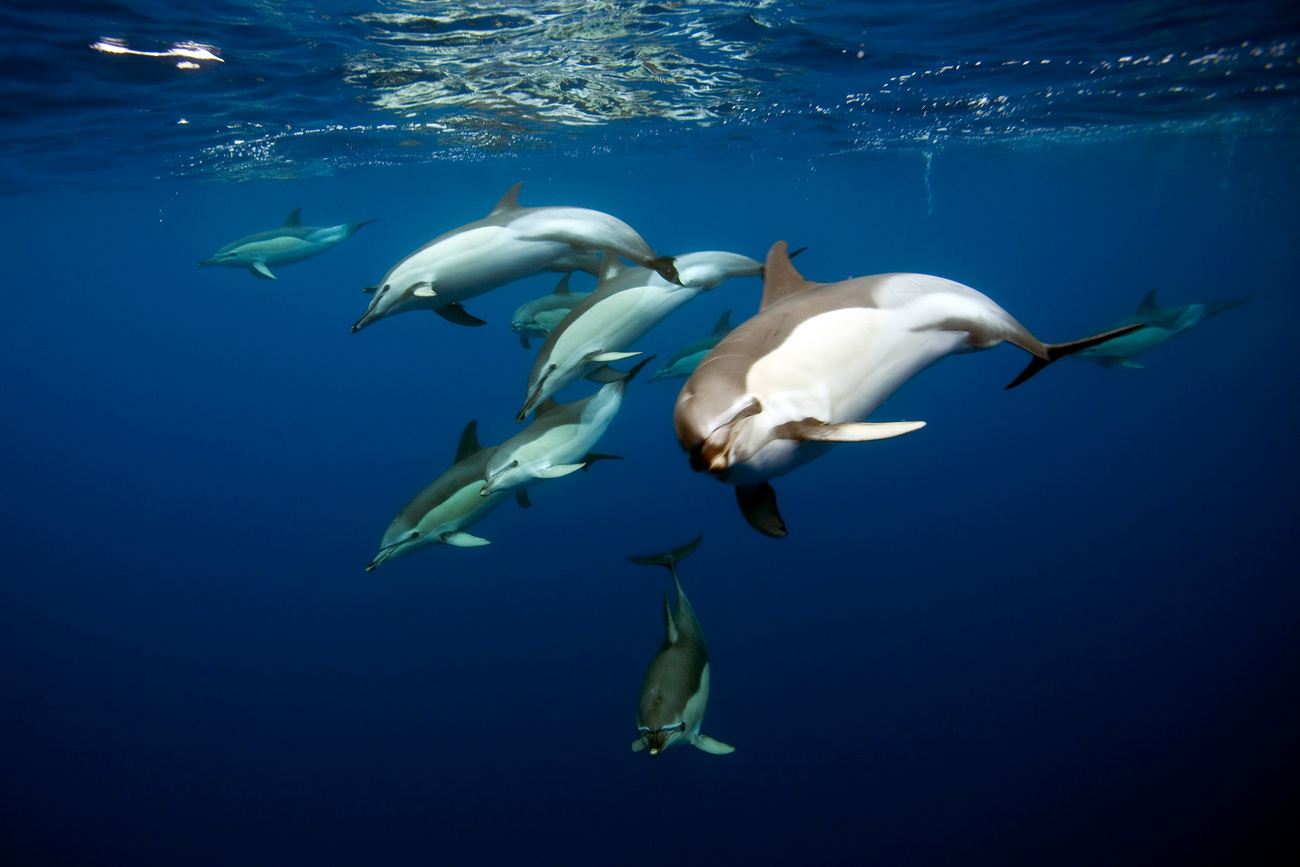
Marine mammal ecology
Marine ecosystems are very complex and well-balanced, and every marine mammal has an important role to play in the upkeep of its habitat and the survival of other species. Herbivores, like manatees, eat plants, and so they create room for new ones to grow while dispensing seeds to new and faraway areas. Filter feeders, like baleen whales, control populations of krill and other small crustaceans. Even top predators, like killer whales, are key to keeping the balance. Without them, overpopulation of prey species could quickly result in food shortages and over-predation of smaller species.
Marine mammals live all over the globe in a range of habitats. Some, like dolphins, spend their entire lives in the water, while others, such as walruses, make use of land to rest, mate, and give birth.
The 5 types of marine mammals
There are five main groups of marine mammals and around 125 total species.
1. Baleen whales (suborder Mysticeti)
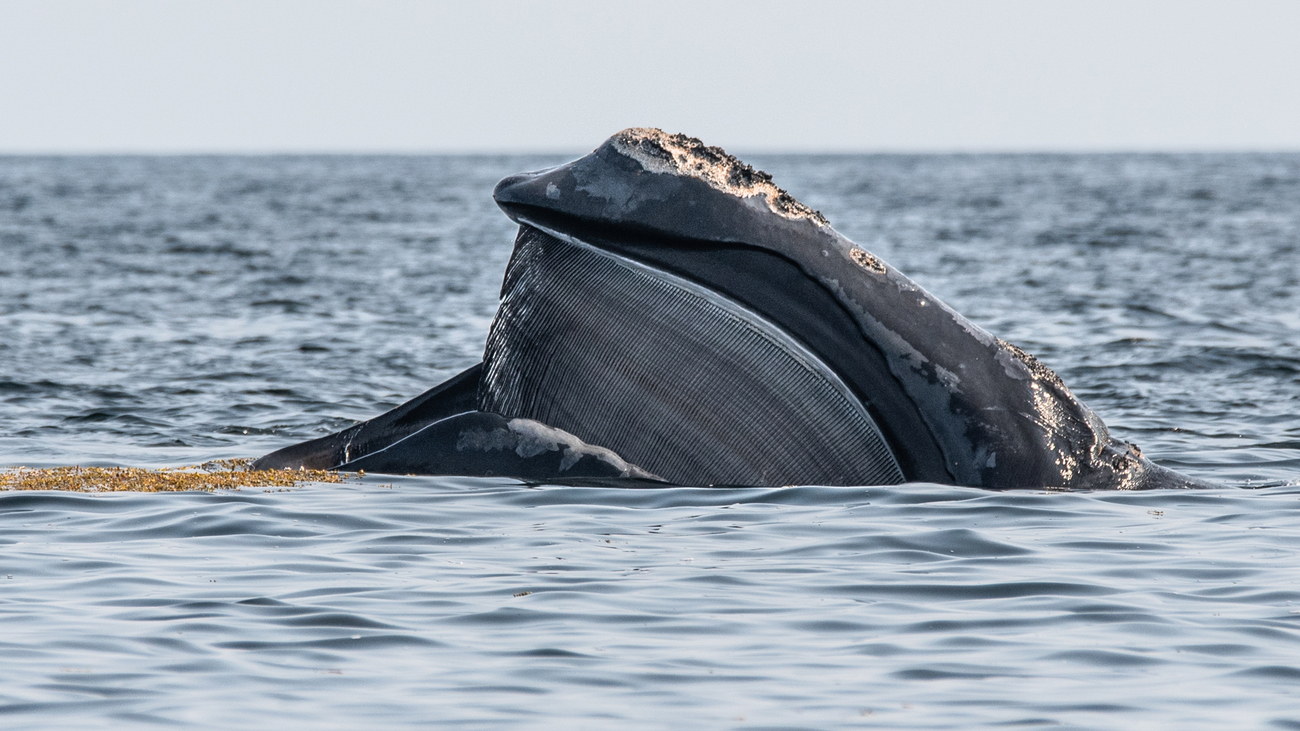
Baleen whales are part of the cetacean infraorder, along with porpoises, dolphins, and toothed whales. These large marine mammals—which include the largest animals on Earth—live exclusively in water and can be found in every ocean on the planet, from temperate seas to the freezing waters of the Arctic and Antarctic.
Also known as ‘toothless whales’, baleen whales are identifiable by their lack of teeth. Instead, they have bristle-like structures which hang down from the palate of their mouths in two rows of up to 400. Made of keratin (the same protein that makes up hair, fingernails, and hooves), these baleen plates allow whales to swallow large amounts of water and sieve out planktonic organisms, on which they then feed.
Despite their name, baleen whales weren’t always toothless and actually evolved from whales that had teeth. Today, though, baleen whales are typically larger than their toothed cousins, ranging in size from the huge 33-metre-long blue whale—the largest animal on Earth—to the pygmy right whale. There are 14 identified species of baleen whales, including the North Atlantic right whale, minke whale, fin whale, humpback whale, and grey whale.
While they are some of the biggest creatures in the ocean, baleen whales feed on some of the smallest. By eating zooplankton, krill, and small fish, they help to maintain the balance of their ecosystems and spread essential nutrients. As mammals, baleen whales give birth to live young after a gestation period of around 12 months. Calves are born multiple metres in length and gain as much as 90 kilograms per day from feeding on their mothers’ milk.
Families of baleen whales include:
- Right whales (Balaenidae)
There are four species of right whale: the bowhead whale, North Atlantic right whale, Southern right whale, and North Pacific right whale. Currently, the North Atlantic right whale is listed as critically endangered, with only about 370 individuals remaining on Earth today.
- Rorquals (Balaenopteridae)
Rorquals are the largest family of baleen whales, with 11 species in total. They include the blue whale—the largest known animal to have ever lived—as well as minke whales, sei whales, grey whales, and humpback whales.
- Pygmy right whale (Cetotheriidae)
The pygmy right whale is just one species. It shares many characteristics with right whales, but they are much smaller and have a dorsal fin.
2. Toothed whales (suborder Odontoceti)
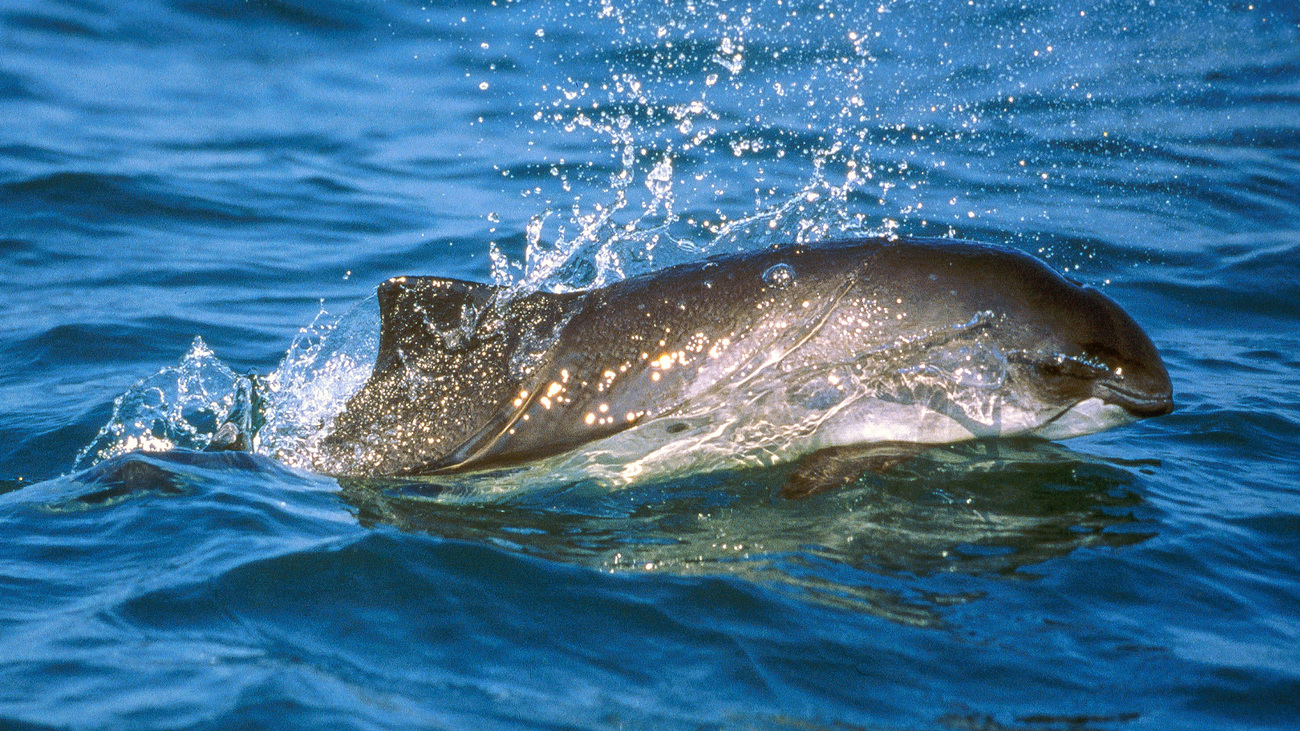
Also part of the cetacean order, toothed whales are a group of marine mammals that have teeth but, despite their name, this group doesn’t just consist of whales, but also includes all dolphin and porpoise species.
Some have full sets of teeth, while others have vestigial teeth that are buried in their jaws, and others only have very few teeth. The narwhal, for example, only has one. Aside from this commonality, toothed whales consist of a very diverse set of species with different body types and sizes, as well as social behaviours and feeding habits.
Unlike baleen whales, toothed whales catch singular prey similar to a land predator. Species with full sets of teeth use them to hunt and capture slippery sea creatures, like fish and squid, but they don’t use them to chew. Larger whales feed on larger sea creatures—the sperm whale even hunts giant squid.
Many toothed whale species are very social, living or gathering in large pods and communicating with ultrasonic pulses. The bottlenose dolphin can even remember individuals it hasn’t seen in at least 20 years.
Toothed whales are slow breeding and give birth to a single calf after a long gestation period. Because they nurse their young for a significant amount of time, many species only reproduce roughly every three years. Beluga whales in particular are notable for their reproductive habits because females experience menopause, a phenomenon that’s rare in the animal kingdom.
Families within the toothed whale suborder include:
- Beaked whales (Ziphiidae)
A family with 22 species, beaked whales are deep diving and are characterised by their beak-shaped jaw, which enables them to eat via suction feeding.
- Sperm whale (Physeteridae)
The sperm whale is a species characterised by its large, squarish head, which lacks teeth on its upper jaw.
- Dwarf and pygmy sperm whales (Kogiidae)
The dwarf and pygmy sperm whales (two different species) resemble the sperm whale in shape, though they are much smaller.
- Baiji (Lipotidae)
The baiji is a species related to the oceanic river dolphins, found only in the Yangtze River in China. It is critically endangered and possibly extinct, as it has not been spotted since 2002.
The narwhal and the beluga are the only two species in this family. Though they are very similar in shape, the narwhal is known for its distinctive, long tusk, which is actually an elongated canine tooth.
- Oceanic dolphins (Delphinidae)
This family includes the common dolphin, pilot whales, the orca (also known as the killer whale), and dozens of other species.
- River dolphins (Iniidae)
There are two species in the river dolphin family, both of which are native to South America. One is the Amazon river dolphin, which is currently facing severe threats in the form of rising water temperatures and drying-up river beds.
- South Asian river dolphins (Platanistidae)
This family has two species, the Ganges river dolphin and Indus river dolphin.
- La Plata dolphin (Pontoporiidae)
The La Plata dolphin is a species in its own family. It is native to the eastern coast of South America.
- Porpoises (Phocoenidae)
Porpoises are very small cetaceans, differentiated from dolphins by their size and their lack of a pronounced beak.
3. Sea cows (Sirenia)

The dugong and three species of manatee make up the order of marine mammals known as sea cows. All four are similar in appearance, with round bodies and no hind limbs. Though they evolved from hooved land mammals—like all marine mammals—there are no remnants of leg bones left in their skeletons. Their eyes are small, and their skin is thick and mostly hairless. All sea cows are herbivores and feed on seagrass and other sea plants, sometimes eating more than 500 kilograms (1,100 pounds) in one day.
Like whales, they can be quite social and are often seen in pairs or small groups. Though they never leave the water, they stay quite close to the surface because they need to breathe every two to four minutes. All four species live in tropical waters where there’s plenty of warmth and plant life to eat.
Sea cows start their lives underwater and learn to swim in less than an hour, with their mothers leading them to the surface for their first breath. Sea cows earned their nickname because they’re slow-moving and graze on grasses—just like cows but underwater.
The four species of sea cows are:
- West Indian manatees, native to the Caribbean, US East Coast, and the eastern coast of Mexico down to northern Brazil
- African manatees, native to West Africa, including some rivers
- Amazonian manatees, native to rivers in the Amazon
- Dugongs, which live around the coasts of East Africa, Madagascar, the Arabian Peninsula, India, Australia, and Southeast Asia
4. Pinnipeds
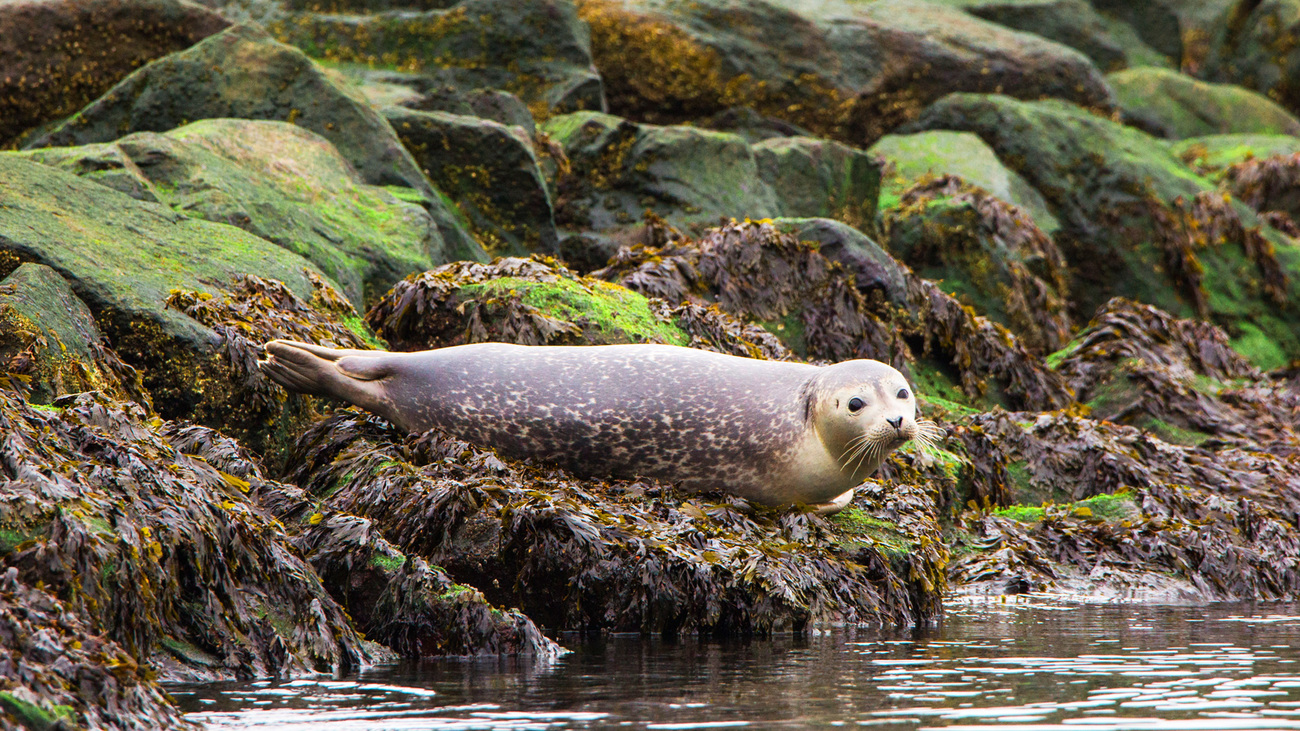
Pinnipeds are the fourth group of marine mammals, consisting of seals, sea lions, and walruses.
Pinnipeds are carnivorous marine mammals that have developed lives dependent on water, though they all have some ability to move on land and ice. They all have some amount of fur, and many have thick layers of insulating blubber.
They live in a range of environments, from the Arctic to more tropical climates, preying opportunistically on a variety of fish and smaller marine creatures. Pinnipeds are also great divers and can hold their breath for as long as two hours as they hunt for food.
Their reproductive habits involve males competing for dominance. Walruses fight each other using their tusks, for example, and sea lion victors mate with up to 16 females during the mating season. Females give birth to one pup at a time and build up its blubber with their high-fat content milk.
Pinnipeds consist of the following families:
- Odobenidae, all species of which are extinct save for the walrus
- Otariidae, the eared seals (including sea lions and fur seals)
- Phocidae, the earless seals
5. Marine fissipeds
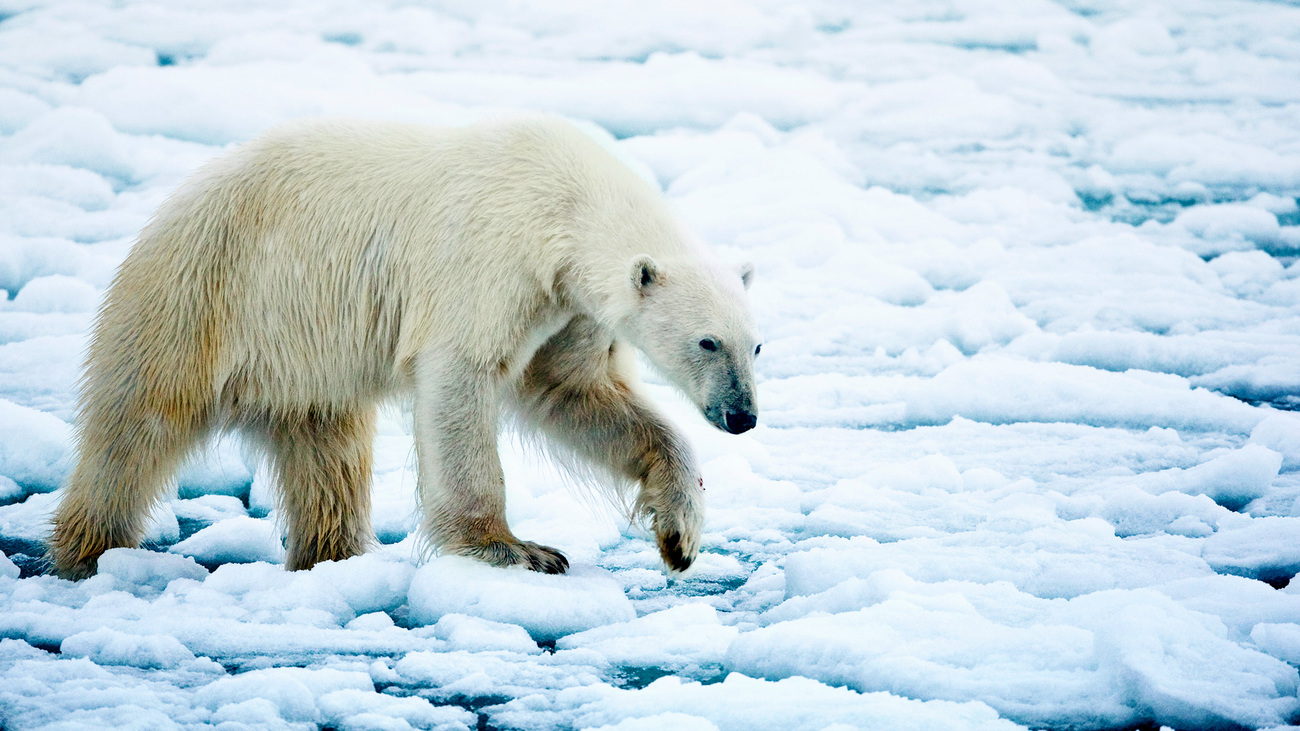
Marine fissipeds are the final group of marine mammals, consisting of polar bears and sea otters. Members of the order Carnivora, these animals are much more closely related to terrestrial carnivores than seals or whales. However, they are still considered marine mammals because they spend significant amounts of time in the water, especially to hunt.
Threats to marine mammals
Various threats affect marine mammals, most of which are directly or indirectly caused by human activity. These animals are very susceptible to being caught in fishing gear, which usually leads to death or horrific injuries. They can also become entangled or ingest plastic waste floating in the ocean and are sometimes killed for meat, blubber, skin, or tusks. Pollution and other human activities damage marine habitats, while ships cause vessel strikes and underwater noise pollution. Here are some of the biggest threats faced by marine mammals today.
Bycatch
Many marine mammals, including seals, porpoises, and dolphins, become victims of bycatch—meaning they are unintentionally caught in fishing nets and gear alongside target species of fisheries.
Climate change
Marine mammals are particularly vulnerable to the effects of climate change. Rising ocean temperatures are a major concern for these animals, from the Arctic species to those found in temperate waters, and the resulting changes in prey distribution are already impacting the health and migratory patterns of marine mammals around the world.
Commercial hunting
Some marine mammals are hunted for their meat and other parts. Commercial hunting is unsustainable and inhumane and poses a major threat to the survival of some species. While there is a global ban on commercial whaling, currently Norway, Japan, and Iceland still permit it. In 2024, Japan added fin whales to its allowed commercial hunting list.
Entanglement
Marine mammals easily become entangled in active fishing ropes or nets, and without arms and hands, it’s nearly impossible for them to free themselves. Experts estimate that hundreds of thousands of whales die every year due to entanglement, which is a serious welfare issue and can have conservation impacts too. Entangled animals often drown, as they cannot reach the surface to breathe, and it also leads to cuts and infection as heavy ropes bite through skin, and to starvation as animals towing heavy fishing gear cannot feed effectively.
Marine debris and ghost gear
Discarded commercial fishing material poses a huge problem for marine mammals. The fishing rope and nets discarded into the ocean in just one year could circle the Earth more than 18 times. Marine mammals can get stuck in this discarded fishing gear, which can cause injuries and fatalities.
Noise pollution
Noise pollution is especially threatening to cetaceans. Because they use sound to locate food and friends, human-made ocean noise can make echolocation impossible, resulting in lost, hungry animals.
Since the 1950s, underwater noise from shipping has doubled every decade, severely impeding whales’ only communication channel. Thankfully, this is a far easier problem to solve than other forms of pollution. Slower ship speeds are a simple solution to make the ocean quieter.
Vessel strikes
Vessel strikes, or collisions with boats and ships, are a big threat to whales, especially to small, endangered populations. They usually occur when shipping lanes and high densities of shipping traffic overlap with critical whale habitats.
Water pollution
Water pollution from agricultural runoff, sewage and chemical spills, and more can be highly toxic to marine mammals. Municipal wastewater discharges, ocean spills, runoff, and deposits from air contaminants, as well as discharges from fishing, shipping, oil- and gas-related commercial activities, can accumulate in marine mammals’ blubber and tissues over time, affecting their health and reproductive success.
Plastic waste also threatens some marine mammals, as they can accidentally ingest or get tangled in it, causing injuries and infections that can be fatal.
Our work
IFAW is dedicated to protecting marine mammals through conservation, wildlife rescue, and policy initiatives. Learn more about our marine conservation work that happens around the globe or check out our marine mammal rescue team. Recently, we opened the first-of-its-kind Dolphin Rescue Center on Cape Cod, Massachusetts, to boost stranded dolphins’ survival rates. We also advocate for various policy initiatives to protect marine mammals and other animals around the world.
Related content
Our work can’t get done without you. Please give what you can to help animals thrive.